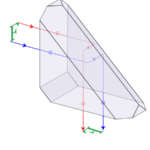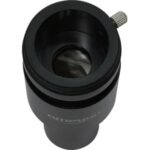Telescope types
In astronomy, a distinction is made between refractors (lens telescopes) and reflectors (reflecting telescopes), and there are sub-variants of both.
Refractors:
A simple and inexpensive form of a refractor is an achromat. In this case, the light is focused via two lenses.
 Schematic structure of a refractor [https://www.bresser.de] | 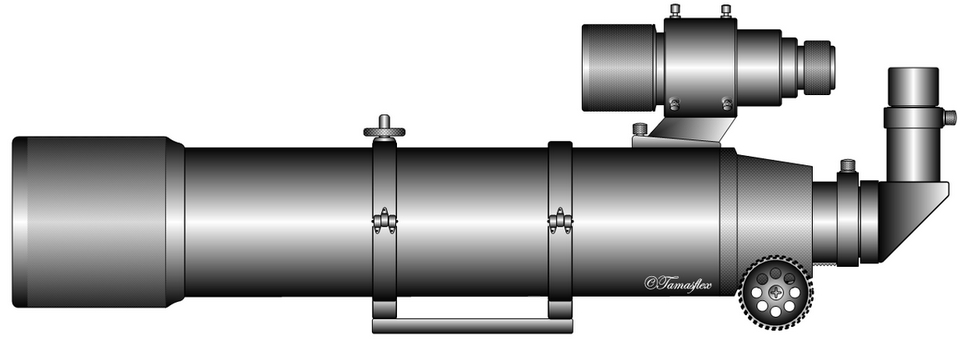 Illustration of a refractor [Tamasflex, CC BY-SA 3.0, via Wikimedia Commons] |
Since light is split spectrally by glass surfaces (different refraction of the wavelengths), the different wavelengths do not meet in one focal point (chromatic aberration).
 Imaging error with an achromat [DrBob (Transfered by nbarth), CC BY-SA 3.0, via Wikimedia Commons]
Imaging error with an achromat [DrBob (Transfered by nbarth), CC BY-SA 3.0, via Wikimedia Commons]
These color errors can be corrected by one or two additional lenses. Color-correcting refractors are called apochromats.
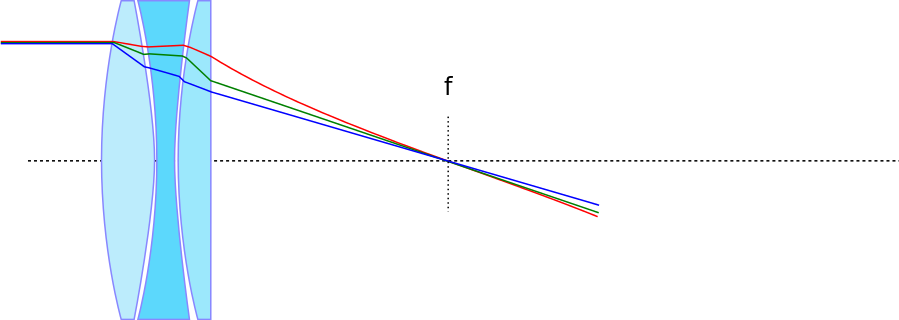 Focusing with an apochromat [Egmason, CC BY-SA 3.0, via Wikimedia Commons]
Focusing with an apochromat [Egmason, CC BY-SA 3.0, via Wikimedia Commons]
Instead of a large refractor, a small camera telephoto lens can be used. This is a refractor with partially short focal lengths that can be used to capture large sections of the sky.
Reflectors:
Reflectors focus the light via curved mirror surfaces. The best-known representative is the Newtonian telescope.
 Schematic structure of a Newtonian telescope[Szőcs Tamás Tamasflex, CC BY-SA 3.0, via Wikimedia Commons] |  Illustration of a Newtonian telescope [Szőcs Tamás Tamasflex, CC BY-SA 3.0, via Wikimedia Commons] |
Newtonian telescopes always have coma error (rays that are not parallel to the optical axis are distorted at the edges of the image due to the parabolic shape of the primary mirror and have a tail). Therefore, Newtonian telescopes require coma correction lenses in the focuser.
A special form are catadioptric systems, where a Schmidt plate with integrated correction secondary mirror is used for the image field corrector (e.g. Schmidt-Cassegrain telescopes). Such systems achieve large focal lengths despite their compactness.
 Schematic structure of a Schmidt-Cassegrain-Telescope [Szőcs Tamás Tamasflex, CC BY-SA 3.0, via Wikimedia Commons] | 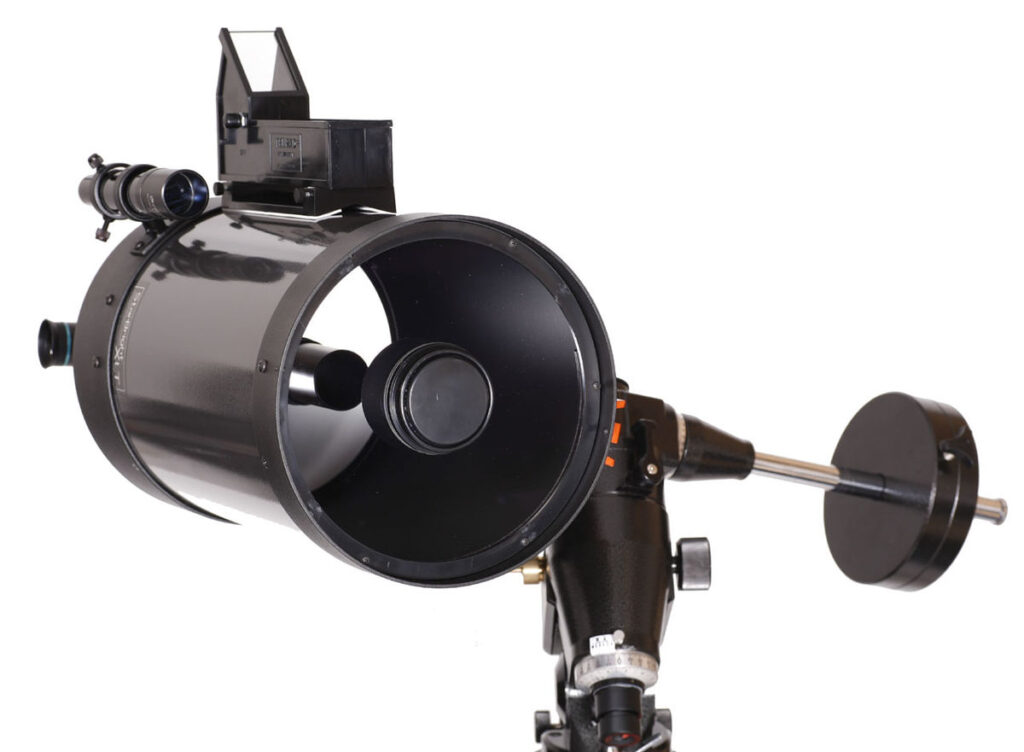 Illustration of a Schmidt-Cassegrain-Telescope [Kapege.de, CC BY-SA 2.5, via Wikimedia Commons] |
With both systems, it is necessary to adjust the deflection or secondary mirrors. Especially with the Newtonian telescope, the two mirrors have to be adjusted very precisely to each other with a collimator.
Both the small secondary mirror in the Newton telescope and the secondary mirror in the Schmidt plate of the Schmidt-Cassegrain-Telescope are located in the beam path and lead to a shadowing, the so-called obstruction. This changes the amount of light collected and thus the image brightness and contrast.
Summary overview table:
| Device | Features | Advantages | Disadvantages |
| Refractor
|
|
|
|
Newtonian-telescope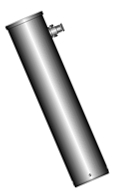 Image Newtonian: Szőcs Tamás Tamasflex, CC BY-SA 3.0, via Wikimedia Commons |
|
|
|
Schmidt-Cassegrain-telescope Image Schmidt-Cassegrain: Kapege.de, CC BY-SA 2.5, via Wikimedia Commons |
|
|
|
The image orientation of the telescopes
Compared to the naked eye, images viewed through a telescope may appear upside down or mirrored depending on the used accessories.

View with the naked eye in the direction of the North
Image orientation of optical systems and accessories in the North direction
| Used tube | Image orientation without accessories | Image orientation with zenith mirror/ zenith prism (opening directed upwards)
| Image orientation with Amici prism / erecting lense
|
Refractor |  upside down and laterally reversed upside down and laterally reversed |  laterally reversed laterally reversed |  with Amici prism upright and laterally correct with Amici prism upright and laterally correct |
Newtonian |  upside down and laterally reversed upside down and laterally reversed(depending on the viewing position) | Not used with the Newtonian telescope, since the light path would lengthen to such an extent that the focus point would no longer be reached. |  with erecting lense upright and laterally correct |
Schmidt-Cassegrain
|  upside down and laterally reversed upside down and laterally reversed |  laterally reversed laterally reversed |  with Amici prism upright and laterally correct with Amici prism upright and laterally correct |
Image Refractor: Tamasflex, CC BY-SA 3.0, via Wikimedia Commons
Image Newtonian: Szőcs Tamás Tamasflex, CC BY-SA 3.0, via Wikimedia Commons
Image Schmidt-Cassegrain: Kapege.de, CC BY-SA 2.5, via Wikimedia Commons
Image zenith prism: https://www.astroshop.de
Image Amici-prism: Fred the Oyster, CC BY-SA 4.0, via Wikimedia Commons
Image erecting lense: https://www.astroshop.de
A comparison of the field of view widths
To get an impression of what commercially available telescopes can normally display for a section of the sky, an illustrative image is shown below.
The following assumptions apply:
- The same camera chip is always used (APS-C format, 22.2x14.8 mm)
- No accessories like reducers or barlow lenses are used
- The following telescopes are compared:
- Telephoto lens with 280 mm focal length
- Refractor with 480 mm focal length
- Newtonian telescope with 1000 mm focal length
- Schmidt-Cassegrain-Telescope (SC) with 2000 mm focal length


